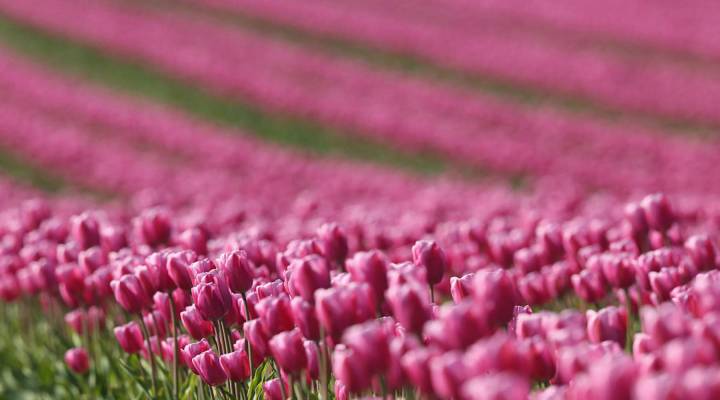
Instagram florists are changing the $7 billion industry

In T Magazine, Deborah Needleman wrote about the modern floral bouquet and how it’s drastically different from the typical red roses or brightly colored daisies we typically see. These changes are happening largely due to a growing movement among florists and flower farmers on Instagram. Needleman sat down with Lizzie O’Leary to discuss this shifting market.
Below is an edited excerpt.
On the modern floral arragnements:
The contemporary florists have kind of opened up the vocabulary of what you can put into a flower arrangement, so it can be anything from herbs, vegetable, oils, weeds, but also really beautiful garden flowers, things from the roadside. They’ve really opened up what is beautiful and what is acceptable to be in a flower arrangement.
Why this movement is happening:
It’s interesting because I think it’s a sort of powerful movement that has the potential to change the floral industry, but it really happened by accident. The proponents of this movement are largely women and largely young women. And almost all of the ones I’ve spoken to started off in the florist industry because they had a friend getting marriedand they offered to do the flowers, and then a friend of a friend and someone saw it, and the next thing they knew, they had a business. These are really sort of young women who are looking to kind of have meaningful lives and live a bit closer to nature, and they’ve really come into the business by accident but are actually sort of taking it by storm and transforming it. At the same time, it seems like there’s a change in sort of the, I guess you could say, supply chain going on here … in this movement [of] mass-produced flowers that are moved from one continent to another.
It is really comparable to what happened with the food movement. It’s really the same idea, and obviously local flowers grown without loads of toxic pesticides and fungicides isn’t perhaps as important as food, because we don’t ingest flowers. But similarly, it means that we’re we’re using flowers that are grown in America. So we’re creating more agricultural land and jobs and decent wages.
Most interestingly to me, we’re using flowers that are simply more beautiful that are tied to a season and a place and are more fragrant. One of the interesting things about shipping flowers around the world is in order for a flower to be able to be shipped for a week in a box and live outside of water, they are bred to be very long lasting and fragrance is really the first thing that goes because … [it is] metabolically taxing on a flower to create [scent].
Instagram’s role:
Instagram has really been able to transform the industry because people see how pretty it is, and so there’s that kind of lifestyle envy that has drawn so many people into the industry. But more importantly, it has the power to make a trend take hold and to change the market. Because before, things would happen in isolation, and you could have a trend but it wouldn’t be so widespread. Now, because the florists and the farmers are working together, they can change a trend so quickly and change the marketplace. So if an influential florist uses, say rusty colored ranunculus, which is a sort of a trendy flower of the moment, they can have their flower farmer grow them, and they can create instant demand for it. It’s really just exponentially changed the market.
On the lack of inclusion in this movement:
It is really true that, unfortunately, at this moment, it is a very sort of white trend. I think [the trend] is quite small, I mean we’re looking at the imported flower industry, [which] is a 7 or 8 billion dollar industry, and the locally or American Grown flower industry is a $500 million a year industry, and it’s still really is in its infant stages. [Right now] it really is about weddings and big events. I think the next step is where it broadens out into not just flower arrangements, but the flowers that we buy at our supermarkets, and it becomes a much broader, less kind of elitist phenomenon.
There’s a lot happening in the world. Through it all, Marketplace is here for you.
You rely on Marketplace to break down the world’s events and tell you how it affects you in a fact-based, approachable way. We rely on your financial support to keep making that possible.
Your donation today powers the independent journalism that you rely on. For just $5/month, you can help sustain Marketplace so we can keep reporting on the things that matter to you.












